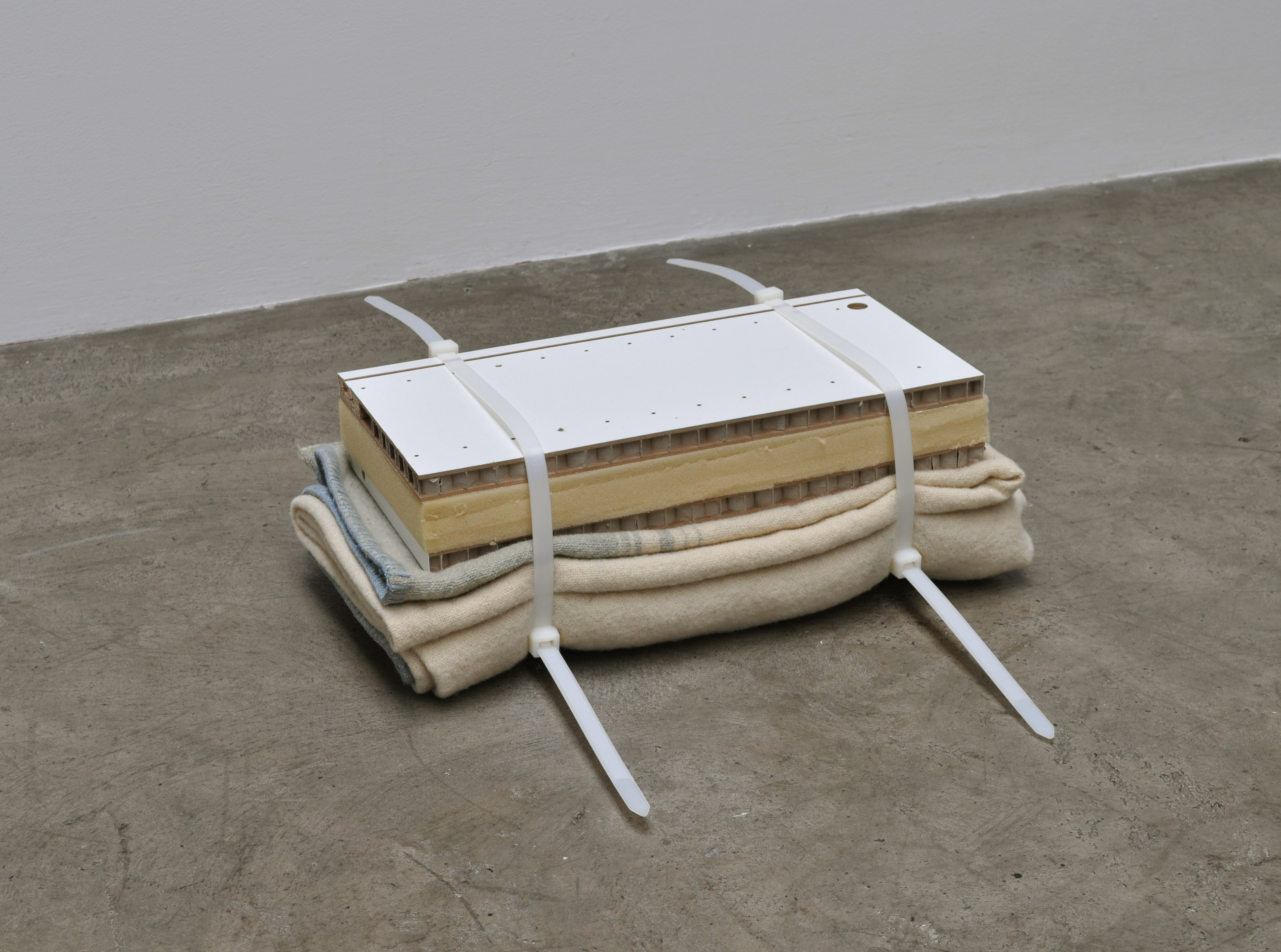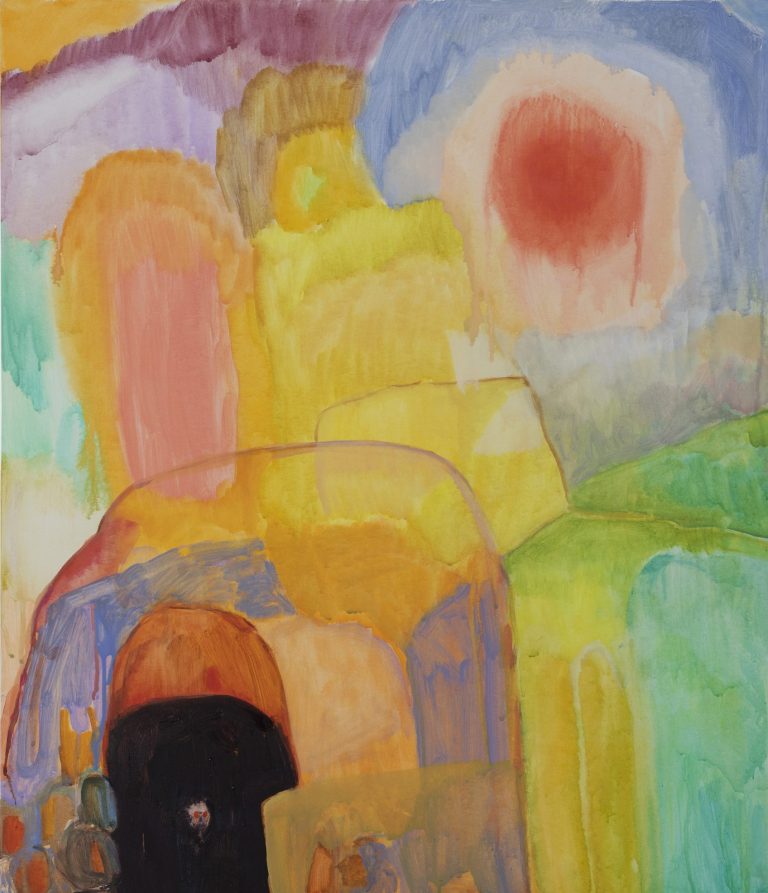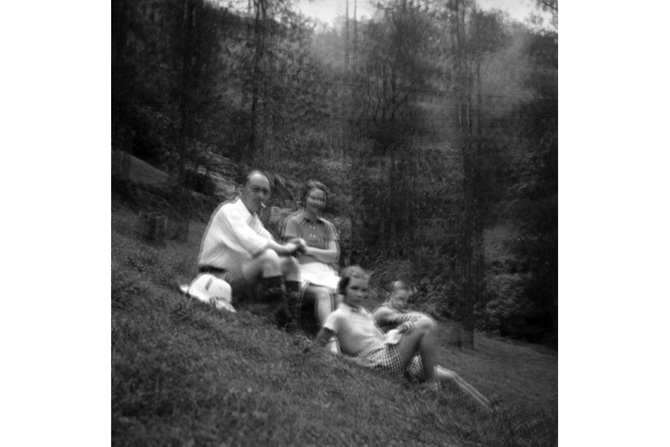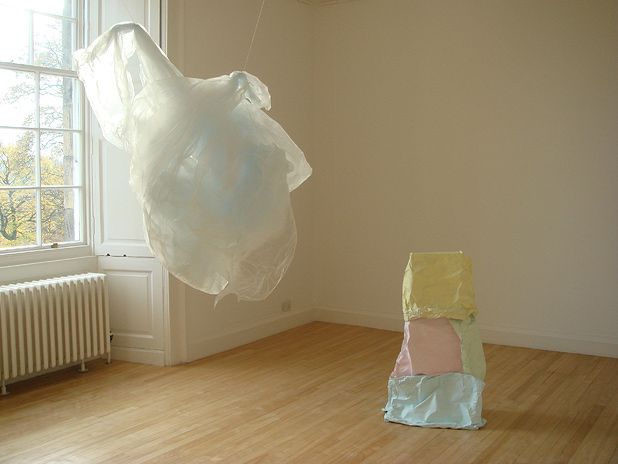Brendan Earley and Kevin Cosgrove’s Nor for Nought, at mother’s tankstation, is a show in which very little happens: directly counteracting the desire for action or stimulation, the work explicates a space wherein such properties are stopped dead in their tracks. The two very different kinds of work – Cosgrove’s modestly sized, figurative oils, and Earley’s sculptural assemblages, which act almost like thwarted readymades – exist in a relationship jointly informed by the language of making both in and of itself. The objects in Cosgrove’s paintings – a car, a tractor, a small dumper truck – are both created from something, by people or other machines, and furthermore are proponents of creation; they are created for the purpose of further creation. Here, however, they lie dormant, and oddly so. The paintings appear almost as portraits of these objects, studying them in unproductive cessation. Adjacent to Cosgrove’s studies of the things and places of making, Earley’s sculptural forms thwart traditional expectations of productivity or usefulness. The materials used – aluminium, plasterboard, fibreglass, a reassembled IKEA kitchen, workbenches, and so forth – all point to an interest in making as process. There is a sense of incompletion, however; the workbench, typically used as a prop for the creation of something, becomes the final resting site for that which it creates (Pieces of the City are Forming like Islands (2010), and Workbench (2011)). Function breaks down as the work ceases to be passed on to another locale, and thus put to use. Instead, it gathers the site of production – the workbench – to itself, and realigns itself as useless, aesthetic. In both bodies of work, the site of non-creation, where function or purpose breaks down, is viewed productively, and enacted upon to make something new.
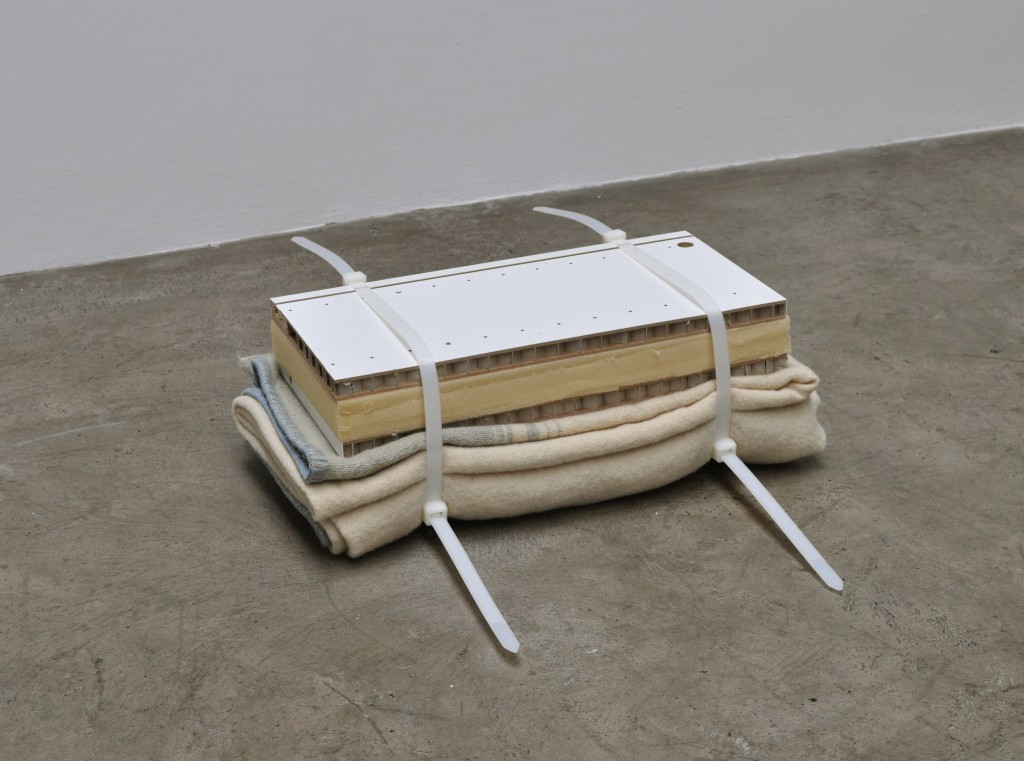
Brendan Earley: They Bedded Down for the Night
woolen blanket, foam, plastic ties, melamine
2011
Image courtesy mother’s tankstation and the artist.
The title of the exhibition, Nor for Nought, also gives some shading to the pairing of these two artists. The title cites a passage from the Bible, a tract in which Paul puts forward to the Thessalonians the value of earning, and working for sustenance; it is a reward in itself, once it has been earned. Recompense exists in such a scenario, regardless of what form it takes. There is value, he suggests, in the simple process of work. As previously mentioned, both Cosgrove and Earley appear to share in this view. Both, through their varied depictions in the breakdown of function or usability, negate a dominant demand for an end result that is finalised, or useful. In such a way, they glean a view of working that accepts the half-done, the static or abandoned, as befitting the labour that precedes its formation. The pleasure in working is its own reward; it does not stipulate a clear and defined outcome or product. That is not to say that the artworks contained in the exhibition are neither finished nor complete – they are – but rather that they use a breakdown in function or activity as a starting point in productively giving rise to a product that diverges from both.
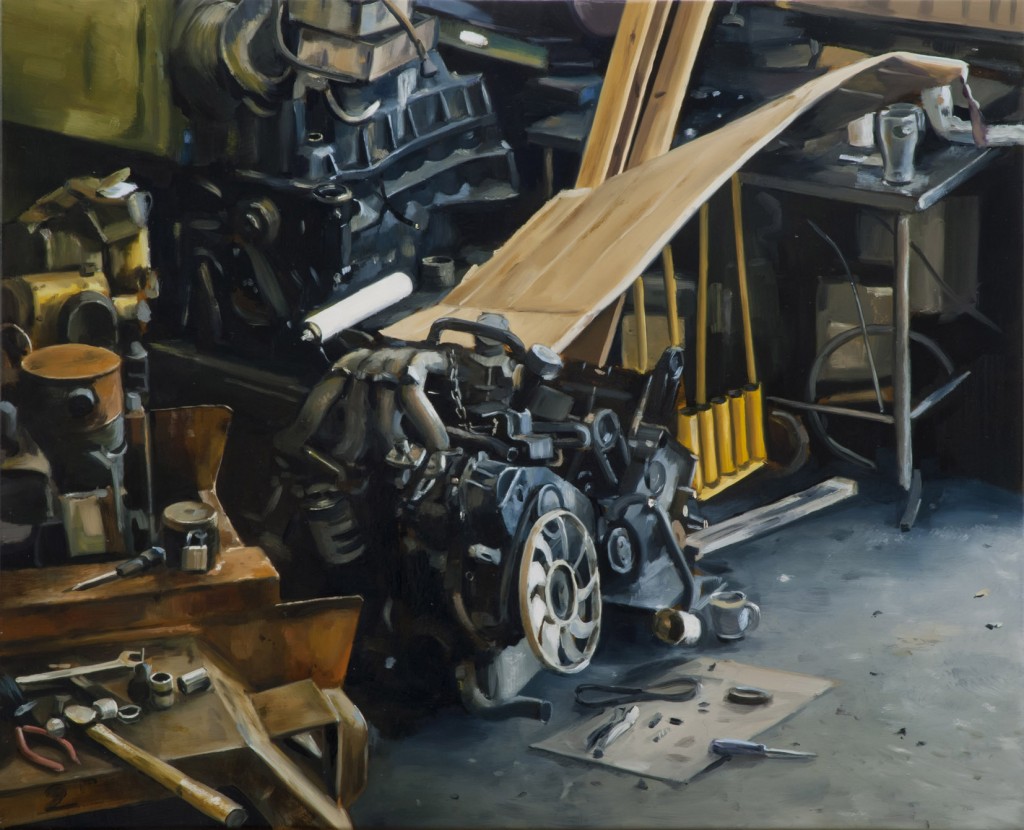
Kevin Cosgrove: Workshop (with cardboad)
oil on linen
2011
Image courtesy mother’s tankstation and the artist.
The exhibition itself contains paintings by Cosgrove and a collection of sculptural forms by Earley, which quietly intersperse the painterly depictions of the things and places of making. An unoccupied yellow workshop, emitting that too-bright fluoro-hue common to offices everywhere, hangs above Earley’s The Lights Are On (2011). This floor-based assemblage combines a thwarted IKEA kitchen, plastic ties, foam, and fluorescent tubes. The exchange between object and image on traversing the gallery is intriguing; one might imagine the objects being made in such spaces as Cosgrove’s, but the question of function creeps interminably in – just what kind of space would this be if given over to the creation of objects such as these? Do such spaces make any sense once the prerequisite condition of function has been abandoned? There is an almost belligerent celebration in the subversion of the object’s expected uses and narratives in Earley’s work, for example in his alternative, counter-intuitive usage of flat-pack constructions. Furthermore, another piece, Don’t Look Back (2010), uses mahogany – generally seen as an almost precious wood – in such a way as to render it virtually invisible. This wall piece comprises an aluminium form perching above a sheet of mahogany affixed to the wall, over which a sheet of black glutinous perspex is overlaid. It is infuriating both formally and ergonomically. And yet it is here that the work is interesting: to hide away that which is most valued is to run counter to economic expectations. Function does not come into the equation, but rather a dominant expectation founded on the consumerist predicate; in any case, to use mahogany here simply seems wholly function-less – MDF would have done the job just as well. It is not dissimilar to the approach taken by Cosgrove in his paintings, as he meticulously paints, pointedly in oils, spaces in which nothing is happening, or machines which at the moment he paints them, have ceased to function. A prevailing disinclination towards light and contrast – most of the works are of a similar breed tonally – further iterates the humdrum quality of these spaces and things. And yet he works towards representation of these scenes, running counter to an expectation of what, really, a painting should be. This is still life in the truest sense, empty of people, devoid of activity, and thus still yet a site of possible creation or epiphany. Another work, Workshop (with cardboard) (2011), shows a grimy workshop, all gnarled shapes and forms seeping out from a soot-black darkness. Sheets of cardboard are haphazardly thrown onto these surfaces, and out of the darkness jumps a luminous gold shade; so extravagant it appears as almost baroque. There’s an excessiveness present here that seems out of place, and it is this that holds the viewer. In other works, a swath of light serves the same purpose, pointing to a resonance which supersedes that which is represented in the work. As with Earley’s work, these paintings present us with a moment of resistance or intransigence.

Kevin Cosgrove & Brendan Earley: Nor for Nought
Installation view
2011
(Foreground: Brendan Earley: All the Lights are On, reassembled IKEA kitchen, plastic ties, foam, florescent tubes, 2011)
Image courtesy mother’s tankstation and the artists.
It is not for nothing that this exhibition appears to say little, or to deny a sense of finality. It is in this repudiation of a normative cycle – work, progress, completion – that both artists celebrate the process of making as an activity in itself. In offering an alternative finality, dependent on moments of inactivity or subversion, both Cosgrove and Earley put forward an alternative notion of finality. This is something that exists in a symbiotic relation to incompletion, and finds its own resting place – in time and space – through the simple acts of making, and of working.
Rebecca O’ Dwyer is a writer currently based in Sydney. She holds a BA Fine Art Sculpture (2008) and MA Art in the Contemporary World (2010), both from NCAD, Dublin. She plans to commence doctoral studies at NCAD next year, focusing on the role of transcendentalism in contemporary art. O’Dwyer is also co-editor of the publication Not Drowning but Waving.

